
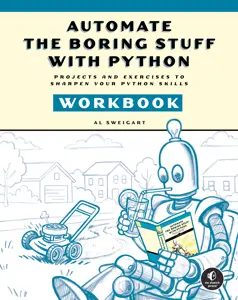
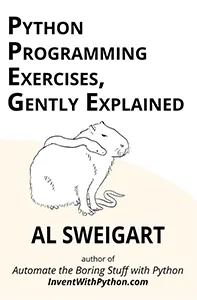
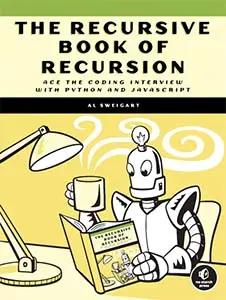





The Royal Game of Ur is a 5,000-year-old game from Mesopotamia. Archeologists rediscovered the game in the Royal Cemetery at Ur, in modern-day southern Iraq, during excavations between 1922 and 1934. The rules were reconstructed from the game board (shown in Figure 63-1) and a Babylonian clay tablet, and they’re similar to Parcheesi. You’ll need both luck and skill to win.
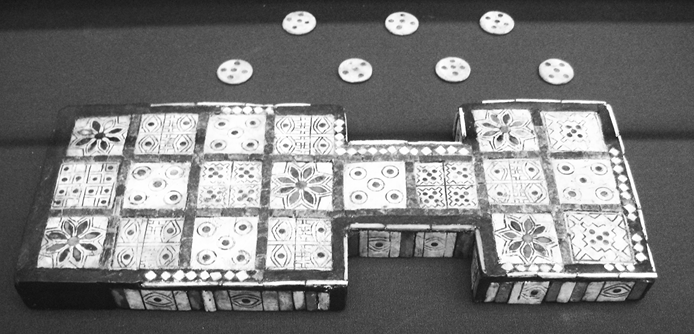
Figure 63-1: One of the five game boards found in the Royal Cemetery at Ur
Two players each begin with seven tokens in their home, and the first player to move all seven to the goal is the winner. Players take turns throwing four dice. These dice are four-pointed pyramid shapes called tetrahedrons. Each die has two marked points, giving an even chance that the dice come up marked or unmarked. Instead of dice, our game uses coins whose heads act as the marked point. The player can move a token one space for each marked point that comes up. This means they can move a single token between zero and four spaces, though they’re most likely to roll two spaces.
The tokens travel along the path indicated in Figure 63-2. Only one token may exist on a space at a time. If a token lands on an opponent’s token while in the shared middle path, the opponent’s token is sent back home. If a token lands on the middle flower square, it is safe from being landed on. If a token lands on any of the other four flower tiles, the player gets to roll again. Our game will represent the tokens with the letters X and O.
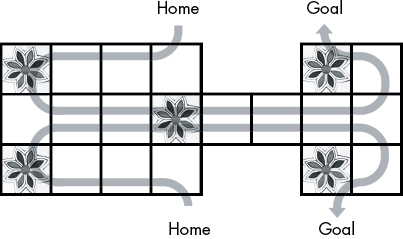
Figure 63-2: The path each player’s token takes from their home to their goal
A video featuring YouTuber Tom Scott and British Museum curator Irving Finkel discussing the Royal Game of Ur can be found at https://www.youtube.com/watch?v=WZskjLq040I.
When you run royalgameofur.py, the output will look like this:
The Royal Game of Ur, by Al Sweigart
--snip--
XXXXXXX .......
Home Goal
v ^
+-----+-----+-----+--v--+ +--^--+-----+
|*****| | | | |*****| |
|* *< < < | |* *< |
|****h| g| f| e| |****t| s|
+--v--+-----+-----+-----+-----+-----+-----+--^--+
| | | |*****| | | | |
| > > >* *> > > > |
| i| j| k|****l| m| n| o| p|
+--^--+-----+-----+-----+-----+-----+-----+--v--+
|*****| | | | |*****| |
|* *< < < | |* *< |
|****d| c| b| a| |****r| q|
+-----+-----+-----+--^--+ +--v--+-----+
^ v
Home Goal
OOOOOOO .......
It is O's turn. Press Enter to flip...
Flips: H-H-H-H Select token to move 4 spaces: home quit
> home
O landed on a flower space and gets to go again.
Press Enter to continue...
--snip--Like in Project 43, “Mancala,” the spaces on the ASCII-art game board are labeled with the letters a through t. After rolling, the player can select a space that contains their token to move that token, or they can select home to begin moving a token from their home to the board. The program represents the board as a dictionary with the keys 'a' to 't' and the values of 'X' and 'O' for the tokens (or ' ' for a blank space).
Additionally, this dictionary has keys 'x_home', 'o_home', 'x_goal', and 'o_goal', and the values for these keys are seven-character strings that represent how full the homes and goals are. The 'X' or 'O' characters in these strings represent tokens at the home or goal, and '.' represents an empty slot. The displayBoard() function displays these seven-character strings on the screen.
1. """The Royal Game of Ur, by Al Sweigart [email protected]
2. A 5,000 year old board game from Mesopotamia. Two players knock each
3. other back as they race for the goal.
4. More info https://en.wikipedia.org/wiki/Royal_Game_of_Ur
5. View this code at https://nostarch.com/big-book-small-python-projects
6. Tags: large, board game, game, two-player
7. """
8.
9. import random, sys
10.
11. X_PLAYER = 'X'
12. O_PLAYER = 'O'
13. EMPTY = ' '
14.
15. # Set up constants for the space labels:
16. X_HOME = 'x_home'
17. O_HOME = 'o_home'
18. X_GOAL = 'x_goal'
19. O_GOAL = 'o_goal'
20.
21. # The spaces in left to right, top to bottom order:
22. ALL_SPACES = 'hgfetsijklmnopdcbarq'
23. X_TRACK = 'HefghijklmnopstG' # (H stands for Home, G stands for Goal.)
24. O_TRACK = 'HabcdijklmnopqrG'
25.
26. FLOWER_SPACES = ('h', 't', 'l', 'd', 'r')
27.
28. BOARD_TEMPLATE = """
29. {} {}
30. Home Goal
31. v ^
32. +-----+-----+-----+--v--+ +--^--+-----+
33. |*****| | | | |*****| |
34. |* {} *< {} < {} < {} | |* {} *< {} |
35. |****h| g| f| e| |****t| s|
36. +--v--+-----+-----+-----+-----+-----+-----+--^--+
37. | | | |*****| | | | |
38. | {} > {} > {} >* {} *> {} > {} > {} > {} |
39. | i| j| k|****l| m| n| o| p|
40. +--^--+-----+-----+-----+-----+-----+-----+--v--+
41. |*****| | | | |*****| |
42. |* {} *< {} < {} < {} | |* {} *< {} |
43. |****d| c| b| a| |****r| q|
44. +-----+-----+-----+--^--+ +--v--+-----+
45. ^ v
46. Home Goal
47. {} {}
48. """
49.
50.
51. def main():
52. print('''The Royal Game of Ur, by Al Sweigart
53.
54. This is a 5,000 year old game. Two players must move their tokens
55. from their home to their goal. On your turn you flip four coins and can
56. move one token a number of spaces equal to the heads you got.
57.
58. Ur is a racing game; the first player to move all seven of their tokens
59. to their goal wins. To do this, tokens must travel from their home to
60. their goal:
61.
62. X Home X Goal
63. v ^
64. +---+---+---+-v-+ +-^-+---+
65. |v<<<<<<<<<<<<< | | ^<|<< |
66. |v | | | | | | ^ |
67. +v--+---+---+---+---+---+---+-^-+
68. |>>>>>>>>>>>>>>>>>>>>>>>>>>>>>^ |
69. |>>>>>>>>>>>>>>>>>>>>>>>>>>>>>v |
70. +^--+---+---+---+---+---+---+-v-+
71. |^ | | | | | | v |
72. |^<<<<<<<<<<<<< | | v<<<< |
73. +---+---+---+-^-+ +-v-+---+
74. ^ v
75. O Home O Goal
76.
77. If you land on an opponent's token in the middle track, it gets sent
78. back home. The **flower** spaces let you take another turn. Tokens in
79. the middle flower space are safe and cannot be landed on.''')
80. input('Press Enter to begin...')
81.
82. gameBoard = getNewBoard()
83. turn = O_PLAYER
84. while True: # Main game loop.
85. # Set up some variables for this turn:
86. if turn == X_PLAYER:
87. opponent = O_PLAYER
88. home = X_HOME
89. track = X_TRACK
90. goal = X_GOAL
91. opponentHome = O_HOME
92. elif turn == O_PLAYER:
93. opponent = X_PLAYER
94. home = O_HOME
95. track = O_TRACK
96. goal = O_GOAL
97. opponentHome = X_HOME
98.
99. displayBoard(gameBoard)
100.
101. input('It is ' + turn + '\'s turn. Press Enter to flip...')
102.
103. flipTally = 0
104. print('Flips: ', end='')
105. for i in range(4): # Flip 4 coins.
106. result = random.randint(0, 1)
107. if result == 0:
108. print('T', end='') # Tails.
109. else:
110. print('H', end='') # Heads.
111. if i != 3:
112. print('-', end='') # Print separator.
113. flipTally += result
114. print(' ', end='')
115.
116. if flipTally == 0:
117. input('You lose a turn. Press Enter to continue...')
118. turn = opponent # Swap turns to the other player.
119. continue
120.
121. # Ask the player for their move:
122. validMoves = getValidMoves(gameBoard, turn, flipTally)
123.
124. if validMoves == []:
125. print('There are no possible moves, so you lose a turn.')
126. input('Press Enter to continue...')
127. turn = opponent # Swap turns to the other player.
128. continue
129.
130. while True:
131. print('Select move', flipTally, 'spaces: ', end='')
132. print(' '.join(validMoves) + ' quit')
133. move = input('> ').lower()
134.
135. if move == 'quit':
136. print('Thanks for playing!')
137. sys.exit()
138. if move in validMoves:
139. break # Exit the loop when a valid move is selected.
140.
141. print('That is not a valid move.')
142.
143. # Perform the selected move on the board:
144. if move == 'home':
145. # Subtract tokens at home if moving from home:
146. gameBoard[home] -= 1
147. nextTrackSpaceIndex = flipTally
148. else:
149. gameBoard[move] = EMPTY # Set the "from" space to empty.
150. nextTrackSpaceIndex = track.index(move) + flipTally
151.
152. movingOntoGoal = nextTrackSpaceIndex == len(track) - 1
153. if movingOntoGoal:
154. gameBoard[goal] += 1
155. # Check if the player has won:
156. if gameBoard[goal] == 7:
157. displayBoard(gameBoard)
158. print(turn, 'has won the game!')
159. print('Thanks for playing!')
160. sys.exit()
161. else:
162. nextBoardSpace = track[nextTrackSpaceIndex]
163. # Check if the opponent has a tile there:
164. if gameBoard[nextBoardSpace] == opponent:
165. gameBoard[opponentHome] += 1
166.
167. # Set the "to" space to the player's token:
168. gameBoard[nextBoardSpace] = turn
169.
170. # Check if the player landed on a flower space and can go again:
171. if nextBoardSpace in FLOWER_SPACES:
172. print(turn, 'landed on a flower space and goes again.')
173. input('Press Enter to continue...')
174. else:
175. turn = opponent # Swap turns to the other player.
176.
177. def getNewBoard():
178. """
179. Returns a dictionary that represents the state of the board. The
180. keys are strings of the space labels, the values are X_PLAYER,
181. O_PLAYER, or EMPTY. There are also counters for how many tokens are
182. at the home and goal of both players.
183. """
184. board = {X_HOME: 7, X_GOAL: 0, O_HOME: 7, O_GOAL: 0}
185. # Set each space as empty to start:
186. for spaceLabel in ALL_SPACES:
187. board[spaceLabel] = EMPTY
188. return board
189.
190.
191. def displayBoard(board):
192. """Display the board on the screen."""
193. # "Clear" the screen by printing many newlines, so the old
194. # board isn't visible anymore.
195. print('\n' * 60)
196.
197. xHomeTokens = ('X' * board[X_HOME]).ljust(7, '.')
198. xGoalTokens = ('X' * board[X_GOAL]).ljust(7, '.')
199. oHomeTokens = ('O' * board[O_HOME]).ljust(7, '.')
200. oGoalTokens = ('O' * board[O_GOAL]).ljust(7, '.')
201.
202. # Add the strings that should populate BOARD_TEMPLATE in order,
203. # going from left to right, top to bottom.
204. spaces = []
205. spaces.append(xHomeTokens)
206. spaces.append(xGoalTokens)
207. for spaceLabel in ALL_SPACES:
208. spaces.append(board[spaceLabel])
209. spaces.append(oHomeTokens)
210. spaces.append(oGoalTokens)
211.
212. print(BOARD_TEMPLATE.format(*spaces))
213.
214.
215. def getValidMoves(board, player, flipTally):
216. validMoves = [] # Contains the spaces with tokens that can move.
217. if player == X_PLAYER:
218. opponent = O_PLAYER
219. track = X_TRACK
220. home = X_HOME
221. elif player == O_PLAYER:
222. opponent = X_PLAYER
223. track = O_TRACK
224. home = O_HOME
225.
226. # Check if the player can move a token from home:
227. if board[home] > 0 and board[track[flipTally]] == EMPTY:
228. validMoves.append('home')
229.
230. # Check which spaces have a token the player can move:
231. for trackSpaceIndex, space in enumerate(track):
232. if space == 'H' or space == 'G' or board[space] != player:
233. continue
234. nextTrackSpaceIndex = trackSpaceIndex + flipTally
235. if nextTrackSpaceIndex >= len(track):
236. # You must flip an exact number of moves onto the goal,
237. # otherwise you can't move on the goal.
238. continue
239. else:
240. nextBoardSpaceKey = track[nextTrackSpaceIndex]
241. if nextBoardSpaceKey == 'G':
242. # This token can move off the board:
243. validMoves.append(space)
244. continue
245. if board[nextBoardSpaceKey] in (EMPTY, opponent):
246. # If the next space is the protected middle space, you
247. # can only move there if it is empty:
248. if nextBoardSpaceKey == 'l' and board['l'] == opponent:
249. continue # Skip this move, the space is protected.
250. validMoves.append(space)
251.
252. return validMoves
253.
254.
255. if __name__ == '__main__':
256. main()Try to find the answers to the following questions. Experiment with some modifications to the code and rerun the program to see what effect the changes have.
nextTrackSpaceIndex == len(track) - 1 on line 152 to nextTrackSpaceIndex == 1?result = random.randint(0, 1) on line 106 to result = 1?board = {X_HOME: 7, X_GOAL: 0, O_HOME: 7, O_GOAL: 0} on line 184 to board = {}?